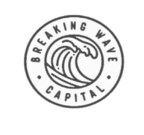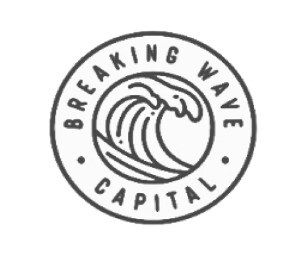Breaking Wave Capital (BWC) has launched its debut venture fund to invest in growth-stage companies transforming healthcare, wellness, technology, media, and sustainability. Founded by seasoned operators Pamela Hall and Robert M. Herzog, BWC is designed to provide more than capital; offering hands-on partnership from leaders with decades of experience scaling businesses across industries. Their operator-led approach sets them apart from traditional financial investors, with a track record that includes over $1.25 billion in transactions, more than 20 exits, and two IPOs. BWC is particularly focused on the rapidly evolving digital health and AI sectors, where funding has stabilized and AI-enabled startups now dominate investment flows. The firm targets Series A and B companies with proven traction, deploying $2M–$10M investments and actively guiding founders on scaling operations, navigating regulations, and growth strategy. With sector priorities spanning healthcare, wellness, AI, media, and sustainability, BWC brings a disciplined strategy backed by real-world operational expertise and shares deeper insights in its new whitepaper, AI Healthcare & Wellness: U.S. Market Analysis (October 2025).
NEW YORK CITY, Oct. 8, 2025 /PRNewswire-PRWeb/ -- Breaking Wave Capital: AI Healthcare & Wellness - U.S. Market Analysis (October 2025)
1. Executive summary
- Funding has stabilized with an AI tilt. U.S. digital health raised $6.4B across ~245 deals in Q1'25; for the first time, AI-enabled startups captured a majority (≈62%) and raised ~$34.4M per round vs. ~$18.8M for non-AI peers.
- Where value is accruing: GenAI's near-term ROI concentrates in administrative efficiency (documentation, prior authorization), clinical productivity (ambient scribing, care coordination), and member engagement—with patient-facing wellness rising via data aggregation + AI guidance.
- Regulatory momentum lowers go-to-market friction:
- CMS Interoperability & Prior Authorization Final Rule (CMS-0057-F) pushes payer APIs; most API requirements are due Jan 1, 2027 (some provisions 2026), which structurally benefits AI automation around prior authorization and data exchange.
- ONC HTI-1 "Decision Support Interventions" adds AI transparency labeling into certified EHRs (effective Feb 8, 2024, with phased timelines into 2026), easing provider adoption of AI decision support
- FTC's updated Health Breach Notification Rule (HBNR) explicitly covers health apps (effective July 29, 2024), raising the data-privacy bar for wellness and consumer apps.
- Clinical AI is mainstreaming: FDA now lists 1,000+ AI/ML-enabled devices cleared/authorized; imaging still dominates, but use cases are diversifying beyond radiology.
- Opportunities: Select companies utilizing AI with clear outcomes, efficiency enhancements, and data analysis and integration present significant near term market opportunities when coupled with meaningful support and funding.
2. Market map & sub-verticals
- Ambient clinical documentation & administrative automation - scribes, CDI/coding, call-center AI, prior-authorization agents
- Care navigation & engagement - member copilots, post-discharge outreach, adherence
- Clinical search & decision support - retrieval-grounded medical answers for clinicians
- Diagnostics & imaging AI; triage, detection, workflow; expanding beyond radiology
- Landscape: FDA's AI device list shows accelerating clearances in 2025.
- Personalized wellness & preventive health — labs + wearables + AI guidance, consumer UX
3. Demand drivers
- Labor shortages & burnout push providers to adopt time-savers (ambient scribing, intake, coding).
- Payer API mandates (CMS-0057-F) create tailwinds for prior-authorization automation and data liquidity - fertile ground for AI agents.
- Consumerization of health - people expect continuous, data-driven guidance, not annual checkups; Function-style lab+imaging bundles exemplify willingness to pay.
4. Headwinds & risks
- Regulatory + privacy complexity: HTI-1 transparency requirements and FTC HBNR raise compliance costs for non-HIPAA wellness apps; missteps invite enforcement.
- Clinical validity & liability: Many FDA-cleared AI devices focus on image analysis; LLM-based devices are rare in approvals so far; evidence standards remain strict.
- Integration burden: Health-system sales still hinge on EHR integration, change-management, and clear ROI vs. baseline workflows.
5. 12-month Outlook (what to watch)
- Payer API build-outs (2026–2027 deadlines) → growth in prior-authorization & claims-automation platforms; watch vendor partnerships with MA and Medicaid plans.
- Ambient & call-center AI stack consolidation (scribes + scheduling + rev-cycle) as buyers prefer bundled SKUs.
- Wellness platforms move "up-funnel" into preventive diagnostics (labs + imaging) with clearer outcomes & pricing (e.g., Function Health + Ezra).
- More FDA clearances beyond imaging; gradual emergence of validated LLM-adjacent tools for clinical decision support.
6. Implications for Breaking Wave Capital Investment Strategy
- Attractive near-term ROI: ambient documentation, coding/CDI, call-center automation, and prior-authorization - fast paybacks and compliance tailwinds.
- Wellness thesis: back data-rich guidance platforms that fuse labs, wearables, and imaging with clear outcomes and privacy compliance.
References:
https://time.com/collections/time100-companies-2025/7289585/function-health/
Media Contact
dashiell Llewellyn, Breaking Wave Capital, 1 6094754103, [email protected], breakingwavecapital.com
SOURCE Breaking Wave Capital



Share this article